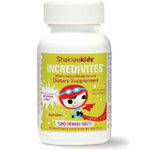In the comments, Michelle asked a good question about my family's personal diet choices. Since I'm figuring she asked a question that popped into most of your minds, I thought I would answer it in my post today. She writes:
"I find it so intriguing that you have been posting about Sally Fallon's book Nourishing Traditions! I was just introduced to this book a week or two ago and have been excited to learn about it. Is this diet what ya'll primarily try to follow? My friend who is on it has had great success!"
Well... I have mentioned why we eat what we eat in My Personal Health Journey, Raw Food Diets, Natural Sweeteners 101, and a in variety of other posts. But it may be hard to put all those pieces together in sequential order. So today, I thought today I would write it all out in one place.
I started my health journey as a senior in college. (See My Personal Health Journey.) At that time, I new little to nothing about nutrition and I had several health ailments to show for it. As I was browsing in a Christian Bookstore, I found What the Bible Says About Healthy Living. On a whim, I picked it up and purchased it.
As I've mentioned before, in the book Dr. Rex Russell presents three principles for healthy living. My paraphrase of them is:
- Eat what God made
- Eat it as close to how God made it as possible
- Eat everything in moderation.
This was revolutionary for me, at the time. When I evaluated what I was eating, I found that most of my food was a man-made "improvement" on a natural food. I discovered that very little of what I was eating was actually natural or whole. So, I made big changes, which you can do much more easily when single than with a family to consider.
My husband had also read this book (independent of me, before we got together), and so we started our marriage on Dr. Russell's whole food principles. (Well, that wasn't the foundation of our marriage, of course... I mean that when we started, we were both on the same page with nutrition.) I didn't know much about cooking, but I taught myself how to read labels and how to prepare food as healthfully as possible.
Then, we were introduced to Dr. George Malkmus' famous Hallelujah Diet. He recommends eating 90% of your foods in their raw state and eating no animal products or processed foods at all. (I wrote more extensively about raw food diets here.)
We jumped on the raw food bandwagon and did our share of juicing and barleygreen. That lasted for about a year and a half, at which time I linked my severe postpartum depression and my daughter's failure to thrive to the diet's lack of proteins and fats. (Like I said, that whole story is here.)
As we searched for solutions to our diet deficiencies, we knew that we did not want to go back to eating processed foods, white sugar, white flour, fractionated and rancid fats or commercial animal products. As we researched, we discovered Sally Fallon's work through the Weston A. Price Foundation.
I read her book, Nourishing Traditions, plus Price's Nutrition and Physical Degeneration, plus about a dozen more from that school of thought. It was a huge time commitment, but I had time for it with only one child!
After careful research into the WAP guidelines (and arguments against them as well!), we decided to add raw milk products, fish oil, eggs from farm hens, and some fish to our diet. We noticed a very positive improvement in how we felt.
Over time, we took things a step further and added grass-fed meats, mineral rich stocks, fermented dairy products, soaked grains, and lacto-fermented foods as well. Notice that I added these things in steps. It took time to understand the processes involved with each of these nourishing foods. And I took it one step at a time. As one thing became my common practice, I would add another. I think this is the most realistic way for a mom to make health changes while still keeping the rest of her life in balance. Don't let yourself be overwhelmed. Take baby steps.
I might need to add that we never went as far as organ meats and raw meat dishes (for those of you who have read Sally Fallon's book in its entirety). We tried to eat liver from grass-fed cows a few times, but I always had extreme difficulty with the smell. That being said, I think we still did pretty well following the WAP diet!
Fast forward three more children (and the fifth on the way)... Since my days as a mother of two with plenty of afternoon hours for food preparation, I have had to simplify. I now have three children in homeschool, a toddler in tow and will soon have a newborn to wear as well. I find that some of Sally Fallon's recipes require much more time than I have... or ingredients that are too expensive for us to acquire at this stage in our lives.
However, we have not neglected the health wisdom that we have gained over the last ten years. We still stay away from white flour and white sugar. We still keep fresh salads and raw foods as a prime part of our daily fare. We still eat healthy, grass-fed meats. We still eat unprocessed eggs and dairy from healthy animals. We still eat everything in moderation.
Yet, I know that it is not feasible for me to soak every nut, legume and grain that we eat. I strive for soaking the majority of what we consume, but I know that I can't do it all. I still make yogurt weekly, but I rarely have time to make lacto-fermented foods. I still use a great deal of homemade chicken stock, but I have to be realistic about how much time I can spend in the kitchen. I simply can't do it all and nurture my children's hearts and minds as well... remember it's not all about their physical bodies, although I do actively concern myself with their health!
So what do we eat? I call it "whole foods." By that, I mean that we eat foods whole, not fractionated or adulterated. We stay away from artificial ingredients. We eat foods as close to their natural state as possible, and we stay away from things that wouldn't spoil. We also add in as much nutrient-dense food as possible, which for us includes yogurt and chicken stock and the occasional jar of homemade sauerkraut.
That's what we eat... It fits our family. What does "healthy" look like for your family? Are there things that you would like to improve? Keep in mind, change happens one step at a time... but change does require taking steps.










































7 comments:
Hi, Amy Ellen...
I am really enjoying these posts seeing as I just found your blog a month or so ago. It's nice to read your journey in healthy eating.
Way off topic here...I'm wanting to pre-make the kale/portabello/parm quiche and freeze it. Do you bake it first and then freeze it, or do you freeze it and then bake? And then...what do you do after taking it out of the freezer?
Thanks so much:) These questions are coming from a mom whose mom didn't cook much, and I'm just learning as I go!
Excellent post! Thank you so much for defining in more detail how you eat. I've seen you reference the various diets but wasn't sure how it all fit together.
I went with my friend to a whole foods co-op today and tasted my first glass of raw milk. It is overwhelming how much there is to "nutritional eating" but we are also trying to take it a step at a time. Thank you so much for your encouragement to take the process slowly! Your blog is so helpful to me!
Hi, Amy Ellen, I am Sally Fallon's publicist. I too, implemented Nourishing Traditions ideas in baby steps. We don't do it perfectly, but have enjoyed so much the learning curve! I do feel that Sally's methods have turned me from ho hum cook into gourmet chef.
I am now blogging and doing media relations for WAPF and was glad to find your blog. Keep up the good work!
Do you know about realfoodmedia.com? We are 7 traditional food bloggers that feed all our stories to one portal. The portal is down right now, but check it out in about a month. It is a wonderful way to connect with others who believe in whole foods!
Kimberly
http://hartkeisonline.com
Hi Kelli,
Yes, I bake the quiche first, then freeze it. I have read that you can do it either way, but I just don't want spilled raw quiche in the freezer... just in case, you know. It can also be frozen longer if it is already baked.
The recommendation is to take it out of the freezer and bake it as directed, adding 15-20 minutes to the baking time.
Hope this helps! Amy Ellen
Thanks, Amy Ellen!
Just so I understand...you bake the quiche for the 30 min. Freeze it. Then, when you're ready to eat it, you bake it for 45-50 min.
Did I get it right?
Thanks again:)
Enjoy your weekend!
"Health wisdom" indeed! Sorry about using quotes in both my posts, but you are so quotable ;)
I appreciate your explanation, as I had been wondering exactly how you did eat :)
I've heard of the Hallelujah diet before and was surprised to find it left you deficient. Maybe God knew that plants would not be as nutritious as before the Flood, so God added more foods to our diet. I'm beginning to realize how much our food has changed during the last century. I can't imagine life without a grocery store!
Post a Comment